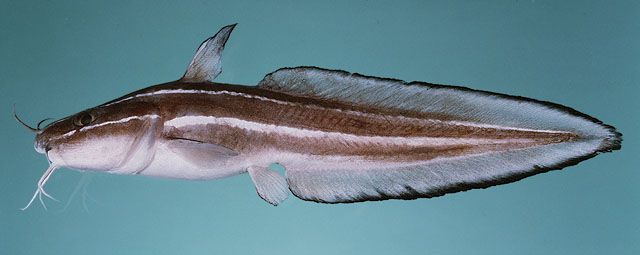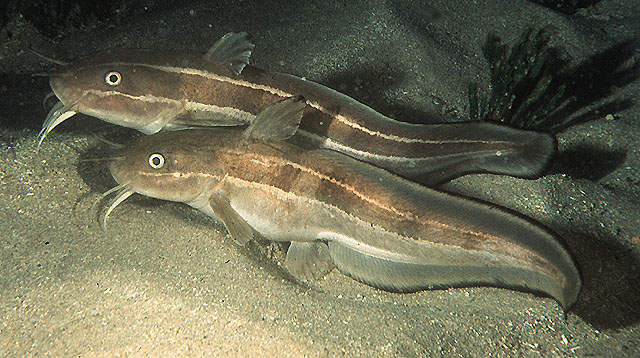مرمور Marbré
Lithognathus
mormyrus
Size / Weight /
Age:
Max length:
55.0 cm TL male/unsexed; common length: 30.0 cm TL male/unsexed; max. reported
age: 12 years
Environment:
Demersal;
brackish; marine; depth range:
0 - 150 m, usually 10 - 20 m.
Climate /
Range:
Subtropical;
50°N - 40°S
Distribution:
Eastern
Atlantic: Bay of Biscay, Strait of Gibraltar and Mediterranean,
Black, and Azov seas to Cape of Good Hope, South Africa and the Mozambique
Channel. Also found around the Canary Islands, Cape Verde and Madeira Is.
Western Indian Ocean: Red Sea; southern Mozambique to the Cape of Good Hope;
not found in tropical east Africa.
Short
description:
Dorsal Spines (total):
11; Dorsal Soft
Rays (total): 12-13;
Anal Spines: 3;
Anal Soft Rays: 10 - 11
Found on the
shelf, over sandy and muddy bottoms as well as sea grass-beds and
estuaries.Gregarious, sometimes forming sizeable schools. Feeds on worms mollusks
and small crustaceans. Protandric hermaphrodite. Flesh excellent; sold fresh
and dried.
Threat to
humans: Harmless.
Human uses: Fisheries:
minor commercial; gamefish: yes.
Lebanon: مرمور, Marmour
Egypt: غزيلّة
Libya: منكوس
France: Marbré.
Italy: Mormora, Marmura, Marmarozza.






